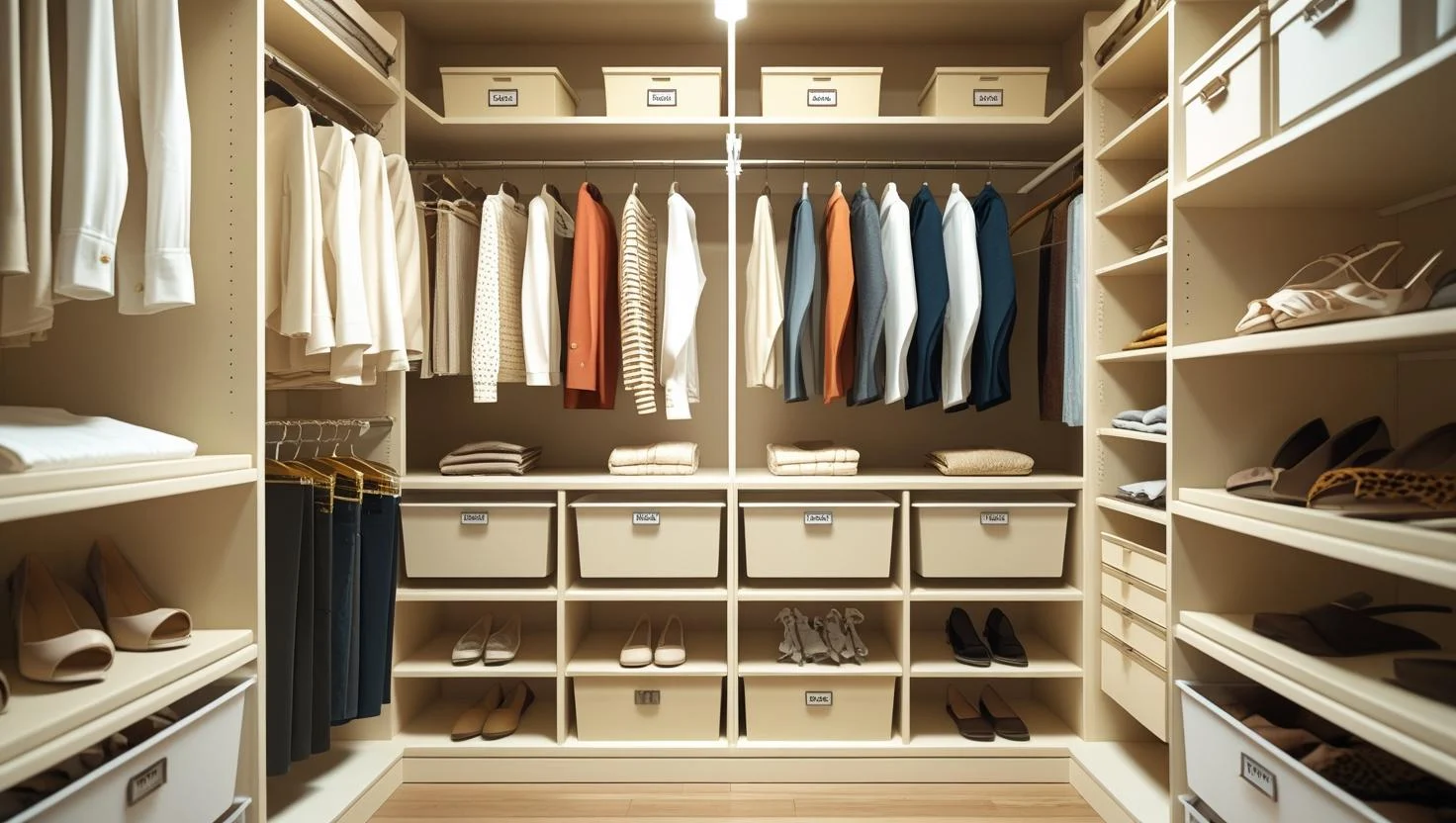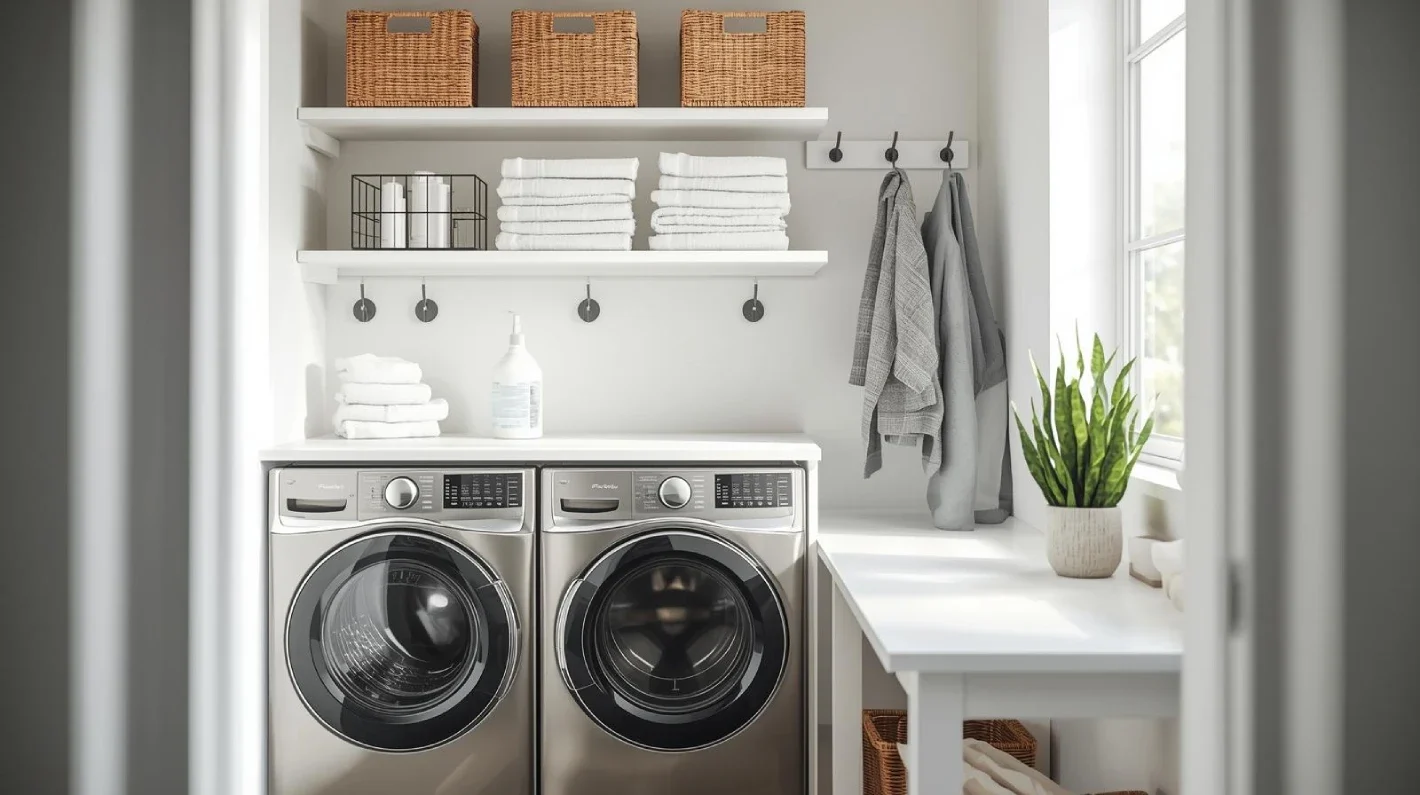Your living room is small, not a shoebox—so let’s treat it that way. With the right design tricks, even the tiniest space can feel open, curated, and totally intentional. These small living room decor ideas are proof that style has nothing to do with square footage and everything to do with smart choices. Think layered textures, airy layouts, and a few clever swaps that make your home feel elevated, not overcrowded.
Whether you’re working with a studio apartment or just a tiny living room idea that needs a fresh perspective, the goal is the same—make every inch beautiful and functional. From minimalist living room looks that breathe to cosy living room ideas that still feel spacious, you’ll find inspiration that fits your vibe. We’ll cover small apartment decorating tips, small living room layouts that actually work, and aesthetic living room updates that make your space look designer-level polished. Because a small space doesn’t limit your style—it defines your creativity.
1. Go Big With a Statement Sofa (Yes, Really)

Counterintuitive? Maybe. Effective? Absolutely. A single, streamlined sofa has more impact than a bunch of tiny, wobbly chairs. It gives your room a focal point and keeps things feeling tidy.
What to look for
- Low profile arms and legs to keep sightlines open.
- Tight-back cushions for a sleek silhouette (no pillow avalanche).
- Lifted on legs so you can see the floor underneath—instant visual space.
Bonus: Choose a neutral fabric and add color with pillows. Easier to switch up with the seasons (or your mood).
2. Mirror, Mirror, Make the Room Bigger

Mirrors are basically cheat codes for light and space. A large mirror opposite a window doubles your daylight and makes the room look twice as airy.
Placement tips
- Hang a floor-to-ceiling mirror behind the sofa or across from natural light.
- Try a gallery of smaller mirrors if one big piece isn’t in the budget.
- A mirrored console or coffee table adds sparkle without visual clutter.
FYI: Round mirrors soften boxy rooms and look amazing above a mantle or console.
3. Embrace Vertical Space Like a Designer

If you can’t go wide, go tall. Using your walls to their full height draws the eye upward and instantly makes your room feel larger.
How to pull it off
- Hang curtains high, like just below the ceiling, and let them kiss the floor.
- Install floating shelves to display books and art without taking up floor space.
- Choose a tall bookcase or ladder shelf to create “vertical moments.”
Pro move: Paint your walls and ceiling the same soft color to blur boundaries and boost height.
4. Coffee Table? Make It Clear or Clever

Bulky tables hog visual space. Swap them for something that looks light or works harder than it should.
Smart picks
- Acrylic or glass tables that practically disappear but still do the job.
- Nesting tables you can tuck away when you need floor space.
- Ottomans with storage—prop your feet up, stash the mess, win the day.
Round shapes help traffic flow and prevent the “furniture gauntlet” situation.
5. Layer Lighting Like You Mean It

Overhead lighting alone makes rooms feel flat (and a little sad). Layer in multiple light sources to add warmth and depth.
Bright ideas
- Wall sconces to free up side tables and add ambiance.
- Floor lamps with slim profiles tucked behind sofas.
- Table lamps for cozy corners and reading nooks.
A dimmer switch is the small-room MVP. Control the mood without changing a single lamp.
6. Keep a Tight Color Story

Too many colors = visual chaos. A small room looks polished when you stick to a cohesive palette—think 2-3 main colors with a couple accent tones.
Simple formula
- Base: a calm neutral (soft white, greige, mushroom).
- Secondary: a muted tone (sage, dusty blue, terracotta).
- Accent: metals, wood, or a pop color in pillows or art.
Want pattern? Keep it in the same color family so it feels intentional, not chaotic.
7. Use Rugs to Zone and Expand

Rugs define spaces and visually anchor furniture. The right size makes your room feel bigger—promise.
Rug rules that actually matter
- Go bigger than you think. At least the front legs of furniture should sit on it.
- Light or mid-tone rugs reflect light and open up the room.
- Try a subtle pattern to hide crumbs and add texture without chaos.
Layer a smaller vintage rug over a large natural-fiber rug for character without shrinking the space.
8. Add Storage That Works Overtime

Clutter is the enemy of a small living room. Solve it with storage that looks good and earns its keep.
Double-duty favorites
- Closed-front media cabinets to hide remotes, wires, and random stuff.
- Storage benches behind sofas or under windows for blankets and games.
- Side tables with drawers for coasters, chargers, and the “junk zone.”
Keep baskets around for quick cleanups. Five minutes before guests arrive? Toss it in and pretend you’re always this organized.
9. Curate Art With Intention

Art is where personality happens. Small room? Don’t be shy. A strong piece or tight gallery brings everything to life.
Gallery game plan
- One large statement piece keeps things calm and elevated.
- Or a gallery wall with consistent frames and a simple color scheme.
- Lean art on shelves or mantles for an effortless vibe.
Place art slightly lower than you think—it connects with seating and feels more intimate.
10. Choose Slim, Airy Furniture Profiles

Chunky furniture eats space. Slim silhouettes make your room breathe.
What to prioritize
- Open bases and slender legs (think mid-century lines).
- Armless chairs or compact swivel chairs for flexibility.
- Wall-mounted TV to ditch the bulky console if storage isn’t a must.
Glass, metal, and light woods read lighter than heavy, dark finishes. Little detail, big difference.
11. Play With Texture, Not Clutter

Texture is the secret sauce. It adds richness without adding “stuff.” Mix a few key textures so your room feels layered and cozy.
Try this combo
- Bouclé or linen for upholstery and pillows.
- Natural fiber rug (jute, sisal) for grounding.
- Warm wood + matte metal in accents and frames.
Keep surfaces edited. A tray with a candle, a book, and a small plant beats 14 tiny trinkets any day.
12. Style With Greenery and Breathable Decor

Plants bring life and movement, which helps small spaces feel fresh instead of cramped.
Low-maintenance wins
- Trailing plants on shelves to draw the eye upward.
- Tall, narrow floor plants (olive tree, ficus alii) in corners.
- Small clusters of two or three plants instead of scattershot pots everywhere.
Use ceramic or woven planters to add texture without visual weight. And if you’re a plant serial killer, high-quality faux is fine—IMO, sanity beats guilt.
Quick Layout Tips That Work in Almost Any Small Living Room
- Float your sofa a few inches off the wall to create breathing room.
- Center your layout around a rug to keep things cohesive.
- Leave pathways at least 24–30 inches wide so the room feels easy to move through.
- Limit decor “zones”: seating, storage, and display. That’s it.
Color and Finish Pairings That Always Work
- Warm white + oak + black accents for modern-cozy vibes.
- Greige + brass + linen for a soft, layered look.
- Mist blue + light wood + chrome for airy and fresh.
Small living rooms aren’t a compromise—they’re a design flex. With the right pieces and a few thoughtful styling choices, your space can look bigger, brighter, and wildly chic. Keep it edited, keep it cohesive, and let your personality do the talking. When you balance function with flow, even the tiniest rooms can feel expansive and inviting.
Remember, great design isn’t about the size of your space—it’s about how you use it. From small living room layouts that trick the eye to textures that add depth, every detail counts. So, embrace the challenge, experiment with scale, and don’t be afraid to let bold choices shine.
If you loved these small living room decor ideas, keep the transformation going! Head over to 10 Storage Hacks for Small Apartments That Feel Like Designer Secrets next—you’ll find clever ways to maximize every inch of your home while keeping it effortlessly stylish.



